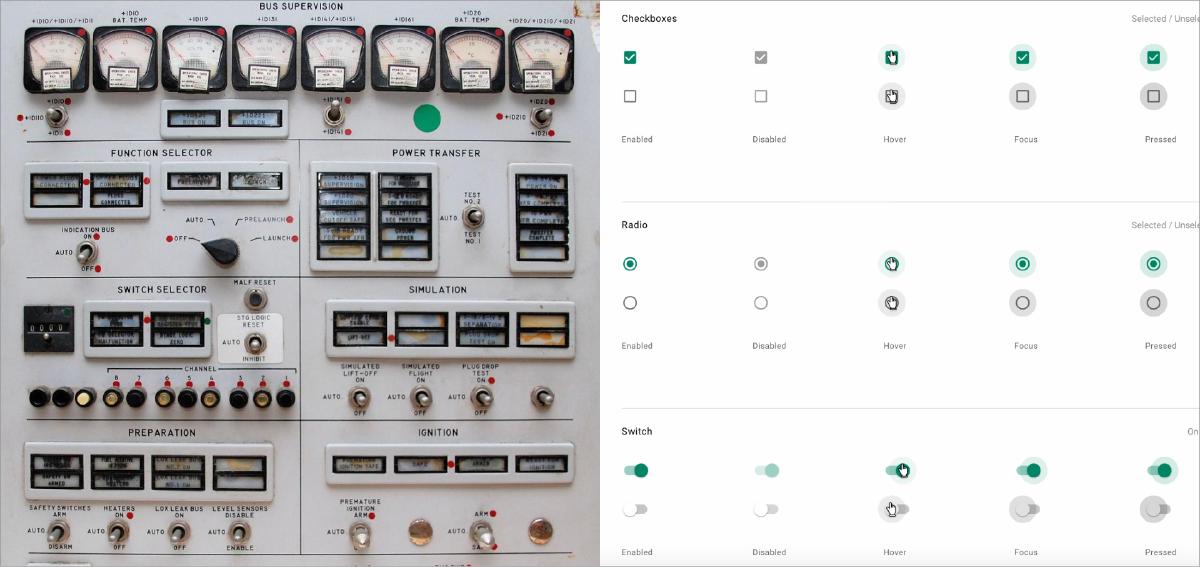Takeaways
- Users will transfer expectations they have built around one familiar product to another that appears similar.
- By leveraging existing mental models, we can create superior user experiences in which the users can focus on their tasks rather than on learning new models.
- When making changes, minimize discord by empowering users to continue using a familiar version for a limited time.
Examples

Form Controls
Things like form toggles, radio inputs, and even buttons originated from the design of their tactile counterparts.

YouTube Redesign
When YouTube launched a new version in 2017 after years of essentially the same design, they allowed desktop users to ease into the new Material Design UI without having to commit. Users could preview the new design, gain some familiarity, submit feedback, and even revert to the old version if they preferred it. As a result, the inevitable mental model discordance was avoided by simply empowering users to switch when they were ready.
Origins
Jakob’s Law was coined by Jakob Nielsen, a User Advocate and principal of the Nielsen Norman Group which he co-founded with Dr. Donald A. Norman (former VP of research at Apple Computer). Dr. Nielsen established the ‘discount usability engineering’ movement for fast and cheap improvements of user interfaces and has invented several usability methods, including heuristic evaluation.